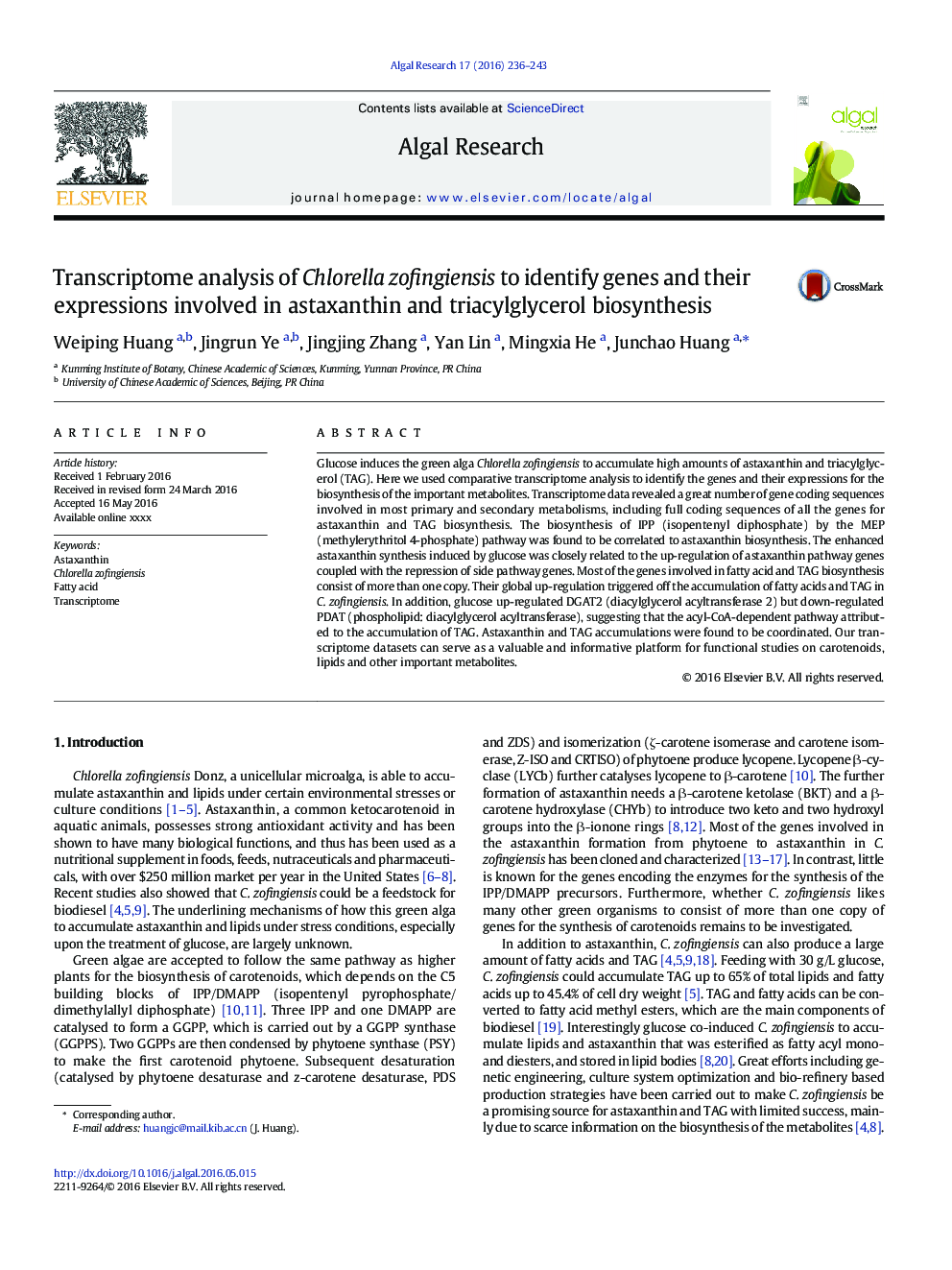| Article ID | Journal | Published Year | Pages | File Type |
|---|---|---|---|---|
| 8086827 | Algal Research | 2016 | 8 Pages |
Abstract
Glucose induces the green alga Chlorella zofingiensis to accumulate high amounts of astaxanthin and triacylglycerol (TAG). Here we used comparative transcriptome analysis to identify the genes and their expressions for the biosynthesis of the important metabolites. Transcriptome data revealed a great number of gene coding sequences involved in most primary and secondary metabolisms, including full coding sequences of all the genes for astaxanthin and TAG biosynthesis. The biosynthesis of IPP (isopentenyl diphosphate) by the MEP (methylerythritol 4-phosphate) pathway was found to be correlated to astaxanthin biosynthesis. The enhanced astaxanthin synthesis induced by glucose was closely related to the up-regulation of astaxanthin pathway genes coupled with the repression of side pathway genes. Most of the genes involved in fatty acid and TAG biosynthesis consist of more than one copy. Their global up-regulation triggered off the accumulation of fatty acids and TAG in C. zofingiensis. In addition, glucose up-regulated DGAT2 (diacylglycerol acyltransferase 2) but down-regulated PDAT (phospholipid: diacylglycerol acyltransferase), suggesting that the acyl-CoA-dependent pathway attributed to the accumulation of TAG. Astaxanthin and TAG accumulations were found to be coordinated. Our transcriptome datasets can serve as a valuable and informative platform for functional studies on carotenoids, lipids and other important metabolites.
Related Topics
Physical Sciences and Engineering
Energy
Renewable Energy, Sustainability and the Environment
Authors
Weiping Huang, Jingrun Ye, Jingjing Zhang, Yan Lin, Mingxia He, Junchao Huang,
